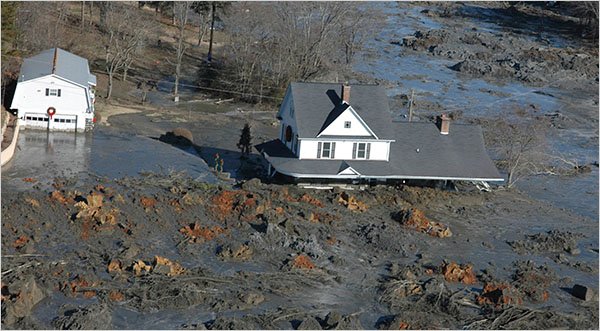Under the Surface of the Tennessee River
The Tennessee River is one of the most iconic symbols of not only Knoxville, but of all of the southeast. It runs through four states (Tennessee, Alabama, Mississippi, and Kentucky), and 5.8 million people live in its watershed. The Tennessee River flows for 652 miles, starting right here in Knoxville and flowing into the Ohio River in Paducah, Kentucky.
Dr. Andreas Fath swimming the Tennessee River. Photo by Knox News.
Unfortunately, the Tennessee River is also home to a substantial amount of pollution. In 2017, Dr. Andreas Fath, a Medical and Life Sciences professor of Furtwangen University in Germany, swam all 652 miles of the Tennessee River over a span of 34 days. As he swam, his team studied the microplastics that were found in the water. The results were startling. Over 18,000 microplastic particles were found per cubic meter, making it one of the most microplastic polluted rivers in the world. To compare, 56 million people live in the watershed on Europe’s Rhine River, but only 200 particles per meter were found in its waters. As well, 400 million people in China’s Yangtze River watershed, but only 9,000 microplastic particles per cubic meter were found. These results clearly show that the Tennessee River has a significant microplastic pollution problem! Nearly half the of the microplastic particles came from polyethylene, which is used to make plastic bags, such as Walmart or Kroger shopping bags. Dr. Martin Knoll of the University of the South in Sewanee attributes the high amount of microplastic pollution to plastic litter, since roadside litter will eventually make its way to the waterways.
Pollution in the Tennessee River
Plastic isn’t the only type of pollution found in the Tennessee River. Sedimentation, industrial pollution, coal mining and burning, and sewage all greatly contribute to the river’s pollution as well. According to Tennessee Riverkeeper, “storm water runoff is generally recognized as the single largest threat to water quality in the United States.” This is because rainwater carries pollution with it from the roadways, such as chemical fertilizers, oil, and litter. All these pollutants become washed down the storm drains, eventually leading to our creeks and rivers.
Kingston Coal Ash Spill. Photo by The New York Times.
The Tennessee River was an unfortunate victim of the largest industrial disaster in United States history, the coal ash spill at the Kingston Fossil Plant in 2008. After a dike collapsed, 1.1 billion gallons of coal ash spilled into the Emory and Clinch Rivers, both tributaries of the Tennessee River. The spill polluted the waters of the Tennessee River, killing hundreds of fish. The spill also had devastating long term effects on the cleanup workers, many of whom have died as a result of the toxic cleanup. The spill took seven years to clean up, and it was a stark and alarming example of how quickly a disaster can poison our waterways.
In 2020, the Tennessee Department of Environment and Conservation published their 303(d) list of impaired waterways, which means “they are too polluted to support at least one of their uses. Uses can include recreation, fishing, conservation and drinking, among other things.” The 2010 report listed only 32.4% of the tested river miles as impaired. The 2020 report, however, brought that number to 55.4%. That means half our waterways are too polluted to support at least one of their primary uses. While this increase can be attributed to many factors, a span of legislation over that time period didn’t help. Several bills passed between 2010 and 2020 that made it difficult for the state to regulate stormwater and limiting restrictions on how farms could dispose of waste. These bills allowed for less regulation of what enters into our waterways, and it shows!
So what is being done?
A Keep the Tennessee River Beautiful Cleanup. Photo by Keep the Tennessee River Beautiful.
There are many great organizations that work hard to remove pollution from the Tennessee River. In March of this year, Keep the Tennessee River Beautiful along with Tennessee Department of Transportation installed eighteen Seabin skimmer devices across the Tennessee River. Seabins are skimmer devices that clean the water, removing litter and filtering out gasoline, oils, and microplastics. There is one Seabin right here in Knoxville at Volunteer Landing, and it has the ability to remove up to 3,000 pounds of marine debris a year.
There are many great organizations that are also working hard to preserve the Tennessee River. Tennessee Riverkeeper has an online form in which members of the public can report pollution in the Tennessee River. Keep the Tennessee River Beautiful removed 152,522 lbs. of litter from the river in 2021, and they have a cleanup in Knox County in October for any volunteers who want to get involved.
As well, one of the easiest things that a person can do though is pick up a piece of litter if you see it on the side of the road. That roadside litter will eventually make its way to our beautiful Tennessee River, so stopping the litter before it can travel any further makes a great difference. As well, since particles from plastic bags make up over half the pollution found in the Tennessee River, refusing single use shopping bags and bringing your own bags to the store will help reduce plastic waste that has the potential of becoming litter.



